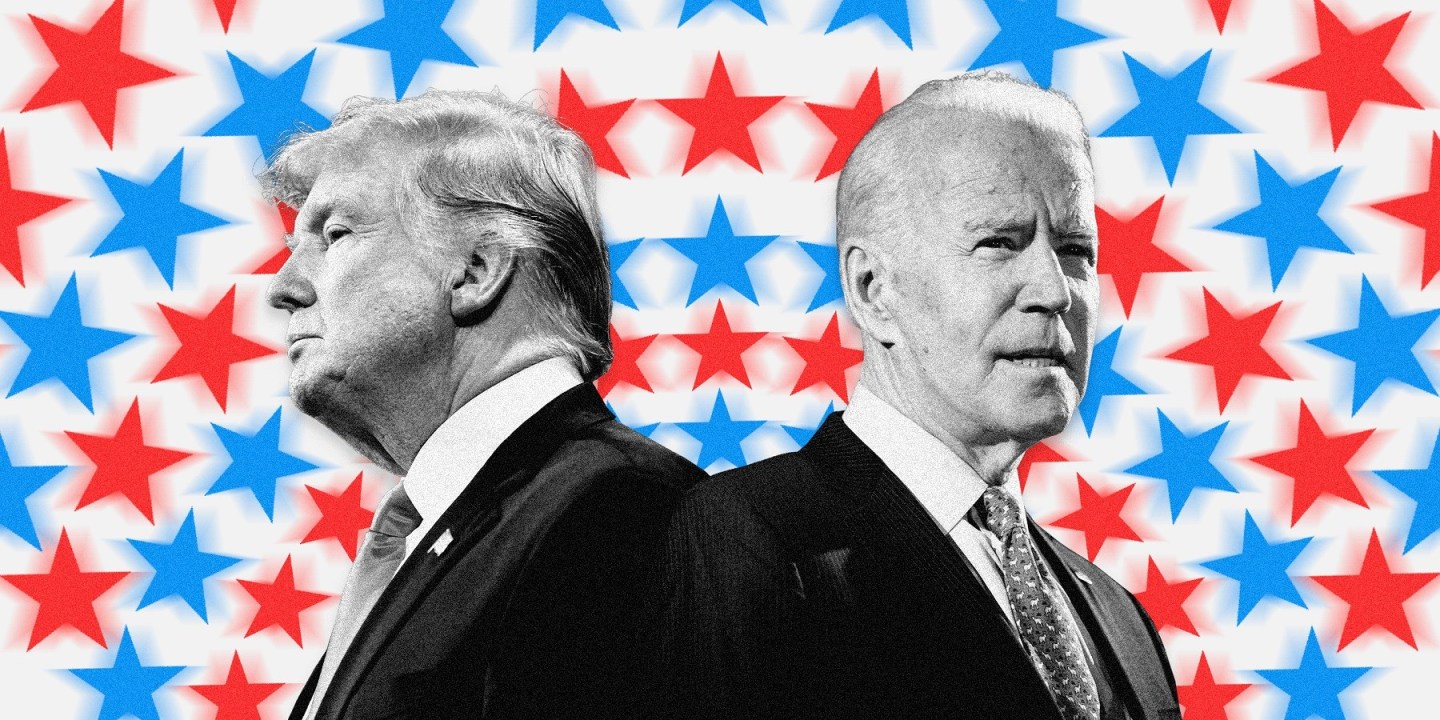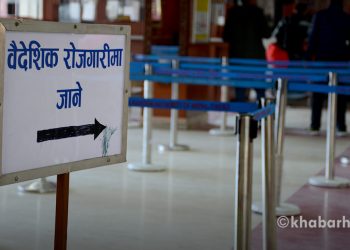KATHMANDU: Voters in America are deciding today whether President Donald Trump remains in the White House for another four years or will pave the way for Democratic Party candidate Joe Biden to the White House.
Trump is being challenged by Biden – the best known as Barack Obama’s Vice-President.
The final voting for the 46th presidency of the US will be held this evening amid the novel coronavirus pandemic with Republican Trump and his vice president Mike Pence seeking a second consecutive term in office against Democratic Biden and Senator Kamala Harris.
If the US Elections Project by the University of Florida is to be considered, some 9.31 crore people have already cast their votes as of November 1.
However, some estimates put the voting-eligible population in the country at over 23.92 crore.
Meanwhile, the NBC/Wall Street Journal poll on November 1 has put Biden at least 10 points ahead of Trump. However, the Fox News poll dated October 27 has Biden leading by 8 points.
The November 3 election, however, will be decided by the Electoral College comprising voting results from 50 US states.
Experts say that the polls and initial counting on Election Day may not be able to project a clear loss or victory.
A primary reason is that the expectation that a majority of Democrat voters are opting for ‘mail-in ballots’ as opposed to Republican voters.
The counting of postal ballots is a tedious process and there is also a possibility that people might have to wait for a few days for the final results of the 2020 US Presidential election.
To get elected in the US’ two-party system, a candidate has to meet three requirements – a natural-born US citizen, at least 35 years of age, and a US resident for at least 14 years.
The US Presidential election process can be divided into four major parts:
Primaries and caucuses
Each of the 50 American states has its own Republican and Democrat leaders. In some of the states, the leadership is represented by groups known as ‘caucus’. During the time of the declaration of the next presidential election, candidates wishing to contest should first win their party’s nomination.
The candidates are needed to campaign across the country and convince the members of their party to vote for them in the primaries.
State party members who vote in favor of a candidate are counted as that candidate’s delegates.
National Conventions
After the candidates secure the support of caucuses and delegates, the Democratic and Republican parties hold separate national conventions to select a final presidential nominee.
In this regard, Joe Biden faced off against some 30 odd Democrats to win the nomination.
Biden chose Kamala Harris to be his running-mate (vice-president) during the Democratic National Convention held at Wisconsin Center.
General Election
Eligible voters from all states vote for a president and vice president today. Votes are also being cast for 538 electors and not the presidential/vice-presidential candidates directly.
The electors are representatives either of the Democratic or the Republican party. Every state is assigned a number of electoral votes depending upon the population of the particular state.
Electoral College
The 538-strong Electoral College is represented by members of Congress (435 members of the House of Representatives, and three electors from Washington DC).
This means that the American citizens vote for some 538 electors who then choose a president and the vice-president.
The candidate who gets the support of 270 of these 538 electors wins the presidency.
Likewise, the 435 electors securing the most votes in their respective states are elected to the House of Representatives.
What are battleground states?
The Electoral College has always given one-sided results. This means that most of the US states are either ‘blue’ (Democratic) or ‘red’ (Republican).
The other way to simplify this system is ‘winner takes all’ that means that if Democrats win the support of a majority of electors from a particular state.
Likewise, the states, where both the Democrat and Republican presidential candidates can have equal chances of winning majority of electoral votes are referred to as battleground states.
In the American 48 states and DC, a candidate winning the most votes secures the candidacy from that state with Nebraska and Maine being the only exception to this rule.
What is the popular vote?
It should be noted that two US presidential elections in recent past have sparked a debate about ‘popular vote’.
In 2000, Democrat Al Gore lost out to Republican George W Bush despite getting more votes from all 50 states.
American Congress and its role
The US Congress consists of two houses- House of Representatives and the Senate.
On November 3, voters from 50 states will vote to elect members to Congress.
The elected members of Congress will be responsible for electing a president and a vice-president.
(With inputs from Agencies)









Comment